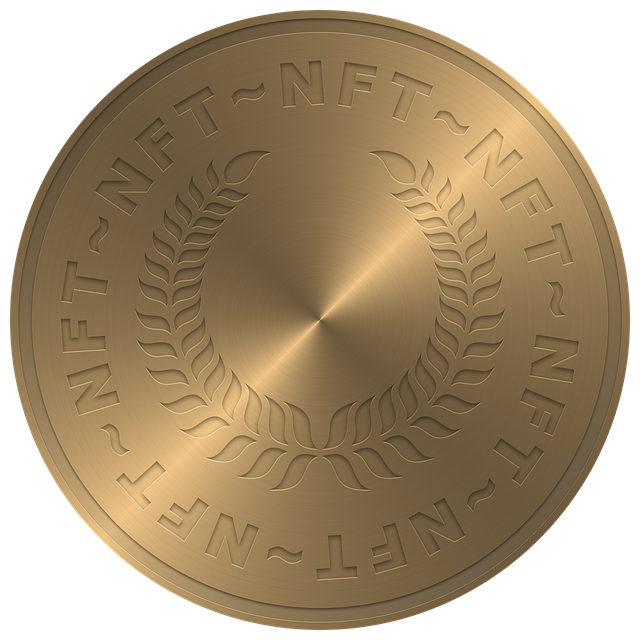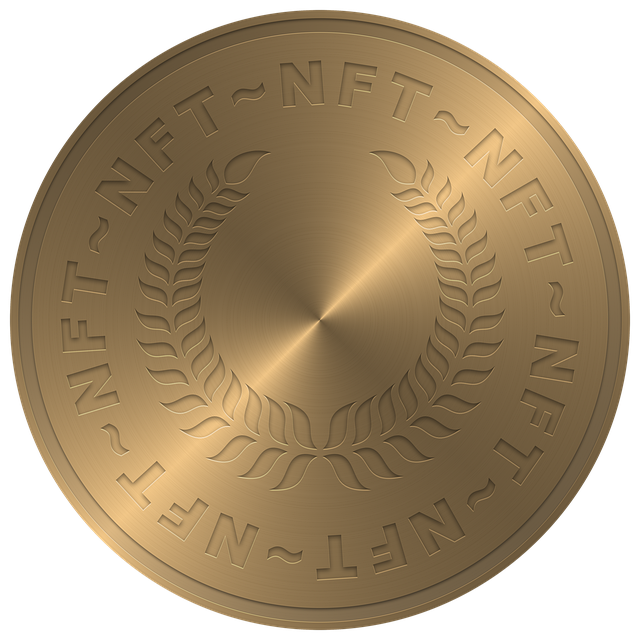Best Crypto AI Trading Bot Platform Guide 2025: Strategies & Picks
Author: Jameson Richman Expert
Published On: 2025-10-28
Prepared by Jameson Richman and our team of experts with over a decade of experience in cryptocurrency and digital asset analysis. Learn more about us.
Crypto AI trading bot platform technologies are transforming how traders and institutions approach the volatile cryptocurrency markets. This comprehensive guide explains what a crypto AI trading bot platform is, how it works, how to evaluate and select one in 2025, strategy types (including AI-based approaches), implementation steps, risk controls, cost and fee considerations, security best practices, and real-world resources to get started. Whether you’re a developer, quant, or retail trader, this article helps you make informed decisions and build or choose the right automated AI trading solution.

What is a crypto AI trading bot platform?
A crypto AI trading bot platform combines automated trading software (bots) with machine learning (ML) or artificial intelligence (AI) models to generate signals, make trading decisions, or execute trade strategies on cryptocurrency exchanges. These platforms typically provide:
- Data ingestion pipelines (price candles, order book, on-chain data)
- Model training and backtesting environments
- Execution modules that connect to exchange APIs
- Risk and position management tools
- Dashboards for monitoring performance and analytics
At the technical core, such platforms use algorithmic trading concepts (see algorithmic trading — Wikipedia) and ML techniques (machine learning — Wikipedia) to predict market movement, optimize execution and manage risk.
Why use AI in crypto trading bots?
- Pattern recognition: AI models can identify complex, non-linear patterns in price series, order book dynamics, and on-chain signals.
- Adaptive strategies: Models using reinforcement learning or meta-learning adjust to regime changes faster than static rule-based bots.
- Scalability: Platforms automate thousands of decisions and can manage multi-exchange, multi-asset portfolios.
- Backtesting & optimization: AI frameworks allow efficient hyperparameter optimization and walk-forward validation to reduce overfitting.
Core components of a modern crypto AI trading bot platform
Understanding platform architecture will help you evaluate providers or design your own system:
- Data Layer: Tick, candle, order book, trade, and blockchain data ingestion with timestamps synchronized to UTC.
- Feature Engine: Calculation of technical indicators (RSI, EMA), order book features (depth imbalance), and on-chain metrics (active addresses).
- Model Training & Validation: Supervised models (LSTM, Transformer), unsupervised (clustering), and reinforcement learning. Includes cross-validation and walk-forward testing.
- Backtesting Engine: Accurate simulation of slippage, latency, maker/taker fees, and order execution models.
- Execution & Connectivity: API clients for exchanges, order routing, safety controls, and failover handling.
- Risk & Compliance: Position limits, max drawdown stops, logging, audit trails and regulatory reporting.
- Monitoring & Alerts: Real-time P&L, latency dashboards, anomaly detection, and alerting via email/SMS/Telegram.

Popular AI approaches used in crypto trading bots
Below are common AI methods you will encounter:
- Time series forecasting: LSTM, GRU, and Transformer models trained on price candles and engineered features.
- Reinforcement learning (RL): Agents (DQN, PPO, A2C) that learn trading actions maximizing expected returns subject to risk constraints.
- Supervised classification/regression: Predicting short-term returns or buy/sell/hold signals using XGBoost, Random Forests, or neural nets.
- Unsupervised learning: Clustering market regimes and switching strategies based on detected regimes.
- Ensembles & meta models: Combining rule-based signals with ML predictions for robust decision-making.
How to evaluate a crypto AI trading bot platform (checklist)
Choose platforms that satisfy both technical needs and operational safety:
- Data quality: Does the platform provide cleaned historical data and streaming data feeds with millisecond timestamps?
- Backtesting realism: Are fees, slippage, order book dynamics and partial fills modeled? (Realistic backtests matter more than optimistic returns.)
- Model explainability: Can you inspect feature importance, SHAP values or model decisions?
- Execution reliability: Low-latency order routing, retry logic, and rate-limit handling for major exchanges.
- Security: API key management with scoped permissions (trade only, no withdrawals), IP whitelisting, 2FA, and audit logs.
- Risk controls: Real-time stop losses, max exposure caps, daily loss limits, and circuit breakers.
- Integration breadth: Supported exchanges, wallets, and data providers. Check if the platform supports the exchanges you prefer.
- Transparency and reputation: Verified performance reports, community reviews, and security audits.
Common crypto AI trading strategies with examples
Actionable strategy examples to test on a platform or in your own bot:
1) Momentum strategy (ML-enhanced)
Idea: Use a supervised model that inputs momentum indicators (e.g., EMA slope, RSI trend, volume surge) and predicts 1–15 minute returns. Output thresholds trigger market or limit orders.
- Data: 1-min candles, trade volumes, VWAP, order book imbalance.
- Model: LightGBM or Transformer time-series model.
- Risk controls: Max position size 1% of portfolio, TD stop-loss at 0.8%.
2) Market-making (hybrid AI + rules)
Idea: Place symmetric maker bids and asks around mid-price. Use ML to dynamically adjust spread width based on volatility prediction and predicted adverse selection.
- Data: Order book snapshots, trade flow, realized volatility.
- Model: Regression to predict short-term volatility; rules to widen spreads during volatility spikes.
- Considerations: Maker rebates and fees are important — simulate fee effects carefully.
3) Arbitrage (cross-exchange)
Idea: Detect and exploit price differences between exchanges. Use fast execution and pre-funded accounts to capture spreads after fees.
- Challenge: Latency, transfer time, and withdrawal fees can eliminate profit. Many bots use simultaneous long and short positions on different platforms.
- Recommendation: Monitor fees and use exchanges with low withdrawal and trading fees (see cost guides below).
4) Grid trading with ML risk filter
Idea: Classic grid opens buy/sell limit orders at fixed price intervals. Add ML signals to pause grids during trending or high-volatility regimes to reduce losses in breakouts.

Backtesting and avoiding overfitting
AI models are susceptible to overfitting. Adopt these rigorous practices:
- Use out-of-sample and walk-forward testing.
- Include realistic execution costs: maker/taker fees, slippage models, spread dynamics, and latency.
- Test across multiple market regimes (bull, bear, sideways).
- Use regularization, early stopping, and ensembles to improve generalization.
- Perform statistical significance testing (bootstrap P&L series for confidence intervals).
Practical implementation: step-by-step
- Choose exchange(s): Consider liquidity, supported instruments, API stability, and fees. To open accounts quickly, try Binance (register Binance), MEXC (register MEXC), Bitget (register Bitget), or Bybit (register Bybit).
- Collect and clean data: Grab historical candles, order book snapshots, and on-chain metrics. For ML experiments, consistent time alignment is critical.
- Engineer features: Technical indicators, time-of-day, liquidity features, and engineered on-chain signals.
- Train models: Use modern ML frameworks (PyTorch, TensorFlow) and try baseline models (XGBoost) first. Refer to practical guides like a GitHub-based ML approach for Bitcoin price forecasting for implementation insights (Bitcoin price prediction using machine learning — practical guide).
- Backtest robustly: Include fees, latency and slippage. Simulate daily funding rates for leveraged instruments.
- Paper trade: Run in a sandbox or paper mode for weeks to monitor live performance and hidden dynamics.
- Deploy with safety: Use limited API keys, rate limits, and circuit breakers. Start small and scale gradually.
Costs, fees and profit netting
Fees materially affect returns. Consider trading fees, funding rates, and withdrawal costs. For a breakdown of Bybit’s fees and examples of cost reduction strategies, check this Bybit trading fees guide. Key fee considerations:
- Maker vs taker fees: Market making can earn rebates but can also face adverse selection.
- Funding rates: For perpetual futures, long/short funding can erode returns over time.
- Withdrawal & deposit fees: Important for arbitrage and frequent rebalancing.
- Latency costs: Execution delay can cause slippage which is an implicit fee.

Security and operational risk management
Protect funds and infrastructure:
- Use exchange API keys with only necessary permissions; never enable withdrawals for trading keys.
- Enable 2FA and IP whitelisting. Store keys in secure vaults (AWS Secrets Manager, HashiCorp Vault).
- Conduct penetration testing and third-party audits for platform providers.
- Maintain cold storage for long-term holdings and limit on-exchange balances used by bots.
- Log all trades and have alerting for anomalous behavior (runaway losses, repeated order failures).
Legal, tax and compliance considerations
Crypto regulation and tax treatment vary by jurisdiction. Keep records of trades (timestamps, P&L, fees) and consult a tax professional. If you trade on behalf of others, review licensing requirements. For users interested in religious compliance, there are guides discussing whether certain crypto products meet Shariah standards — for example, a discussion about Binance Earn and Shariah compliance can provide perspective (Is Binance Earn halal? — Shariah guide).
Model risk: common pitfalls and how to mitigate
- Concept drift: Markets evolve — retrain models regularly and monitor performance by regime.
- Survivorship bias: Include delisted tokens and markets during backtests to avoid inflated returns.
- Data snooping: Avoid multiple hypothesis testing without correction. Keep a strict research/production split.
- Insufficient transaction cost modeling: Always simulate fees, slippage, and depth-limited fills.

Infrastructure and scaling tips
For production-grade trading bots:
- Use containerization: Docker + Kubernetes for fault tolerance and easy deployment.
- Streaming platforms: Kafka or Redis Streams to process high-frequency data feeds.
- GPU training: If using deep learning, leverage cloud GPUs but keep inference lightweight for low-latency needs.
- Monitoring & observability: Prometheus + Grafana for latency, P&L, and system health metrics.
Example architecture for an AI-powered bot
High-level components:
- Data ingestion (exchange WS & REST, blockchain nodes)
- Feature store & transformation microservices
- Model training cluster (batch) and model registry
- Inference service (low-latency model serving)
- Order manager & execution engine connected to exchange APIs
- Risk manager enforcing limits and circuit breakers
- Dashboard & alerting for operations
Where to learn and find sample projects
Open-source code, community projects, and practical guides accelerate learning. For a practical, GitHub-oriented guide to Bitcoin price prediction using ML, see this hands-on walkthrough (Bitcoin price prediction using machine learning — guide).
Other useful resources:
- Cryptocurrency — Wikipedia for basic crypto concepts.
- Online courses from reputable universities on machine learning and time series forecasting.
- Community forums and code repositories (GitHub) for strategy examples and backtesting frameworks.

Cross-market AI — lessons from Forex to Crypto
AI trading has been applied in forex for decades. Some techniques transfer directly to crypto, but differences exist (higher volatility, fragmented liquidity, 24/7 trading). For practical insights on using AI in FX that translate to crypto strategies, review community discussions and guides, for example an applied piece on using AI to trade forex (Using AI to trade Forex — practical guide).
Practical checklist before going live
- Paper trade for a statistically meaningful period (weeks to months depending on frequency).
- Validate backtest vs live slippage and fills; adjust models accordingly.
- Set clear risk parameters (max drawdown, daily loss limit).
- Perform security audit on keys, servers, and third-party integrations.
- Confirm fee structure and simulate how fees affect net performance (refer to exchange fee guides).
- Keep disaster recovery plans and manual override controls ready.
Choosing exchanges and fee optimization
Select exchanges with good liquidity for the assets you trade, transparent fee schedules, and strong API support. You can open accounts on major exchanges quickly via these links: Binance registration, MEXC registration, Bitget registration, and Bybit registration. Compare maker/taker fees, volume tiers, and funding rate histories before committing. For concrete cost reduction techniques and Bybit fee details, read this guide (Bybit fees and cost reduction).

Ethics, sustainability and responsible AI
AI models should be tested to avoid exacerbating market instability. Avoid strategies that could manipulate thin markets. Track model behavior and add guardrails to prevent cascading trades in response to false signals. If you provide a hosted platform, include terms of service prohibiting manipulative behavior and ensure compliance with local laws.
Case study (simplified): Building a momentum AI bot
High-level steps and expected outcomes:
- Collect 1-minute candles for BTC/USDT for the past 2 years.
- Engineer features: 5/20/50 EMA slopes, RSI, volume z-score, order book imbalance.
- Train LightGBM to predict 5-min future returns; focus on classification (up/down) to reduce noise.
- Backtest with slippage of 0.05% and maker/taker fees based on chosen exchange tier.
- Paper trade for 8 weeks and monitor live hit rate and net P&L.
- Deploy with 0.5% portfolio per trade, daily max loss 2% of equity, and kill-switch if drawdown > 8%.
Expected insights: The ML model may improve entry timing versus naive EMA crossovers but must show consistent net edge after costs.
Next steps and resources
If you are ready to experiment:
- Set up accounts on major exchanges (Binance, MEXC, Bitget, Bybit) via the registration links above to test connectivity and fee tiers.
- Follow the hands-on ML guides and code repositories. A practical GitHub-based Bitcoin ML guide can fast-track experiments (Bitcoin ML practical guide).
- Learn about fee management and optimization strategies (review fee guides including the Bybit analysis: Bybit fees guide).
- Study non-crypto AI trading experiences and translate lessons (see a practical Forex AI guide: Using AI to trade Forex).

Conclusion
Choosing or building a crypto AI trading bot platform in 2025 requires careful evaluation of data quality, backtesting realism, security, fee impacts, and model governance. The potential upside of AI—better pattern recognition and adaptive strategies—comes with responsibilities: manage model risk, simulate fees and execution realistically, and prioritize security. Use the practical guides and fee analyses referenced here as starting points and always begin with robust paper trading before deploying live capital.
Further reading and practical guides: Bitcoin ML implementation (practical guide), Bybit fee optimization (fees & examples), AI lessons from Forex (Forex AI guide), and ethical/Shariah considerations for yield products (Binance Earn Shariah guide).
Disclaimer: This article is educational and does not constitute financial advice. Always perform your own due diligence and consult professionals for legal, tax, or investment guidance.